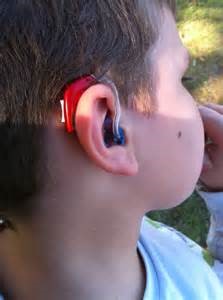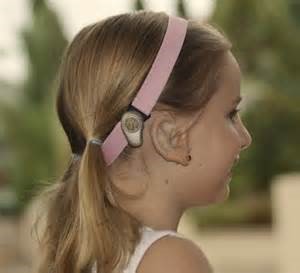Glue Ear and Grommets
“Glue” trapped behind the ear drum
What is glue ear?
Glue ear is a very common condition, affecting mainly children, where thick sticky mucus builds up behind the eardrum. In some children it causes hearing problems. They may also develop, as a result, problems with speech, behaviour and education.
In a lot of cases glue ear will clear up by itself, and will not require any treatment. However, if it has persisted for more than 3 months, and if it is causing significant hearing loss, then most doctors would feel that it requires treatment of some sort.
What causes glue ear?
The reason children tend to get glue ear is because the tube that normally drains the mucus away (the Eustachian tube) does not work very well. We do not know why this is so, or why children in particular are so prone to the problem.
What are the treatment options for glue ear?
It depends from patient to patient, but the 3 main options are:
Watchful waiting
Temporary hearing aids
Grommets
The Otovent device may also be used in parallel to all 3 of these options.
Otovent® (Autoinflation)
For all children aged 3 and over who are found to have glue ear, Mr Rainsbury recommends the use of an Otovent® balloon. Otovent is a small nasal balloon which the patient blows up using their nose. Otovent equalises the pressure and relieves the symptoms of glue ear in the middle ear. The act of blowing up the balloon helps to open up the Eustachian tube, making it easier for fluid to drain from the middle ear. Children can use Otovent at home under parental supervision. It is painless, harmless and takes only a matter of seconds to perform. Otovent should be used 2-3 times daily during the 3 months between the initial hearing test (when the glue ear was diagnosed) and the follow up test. Patients will often start to see results as early as a few days into using the Otovent.
There is some evidence that this device may improve the chances of the glue ear settling down by itself, and therefore avoid the need for any treatment.
It is very safe and easy to use, although some younger children may find it difficult.
The Otovent is widely available online (just type "Otovent" into your search engine) and in pharmacies for £5-£10.
Watchful waiting
If glue ear is not treated by surgery, then there is a good chance it will get better by itself in time, but how long this will take cannot be predicted; it may take years. Some children will cope very well with a mild hearing loss, but most children with a persistent hearing loss would be expected to fall behind socially and at school without treatment.
Some parents may feel that their child is coping very well with their hearing loss and do not want them to have any treatment other than, perhaps, regular hearing tests.
In most cases, if the hearing levels are not too bad and there is no impact on speech development or school performance, your child will have their eardrum health checked by a doctor and then be discharged to the GP. They can be referred back if they have problems with hearing getting worse or recurrent infections.
Temporary hearing aids
A hearing aid can help a child overcome the hearing loss associated with glue ear. Some children benefit more than others, but in many cases children can be helped to avoid an operation by the temporary use of a hearing aid. It will give the condition chance to resolve on its own, without having grommets.
If the family want to try this method of treatment, Mr Rainsbury and the audiologist will work together to monitor the situation and make sure that the child is correctly managed.
After the decision has been made to trial a hearing aid, your child will be referred for two appointments with a Paediatric Audiologist to choose the appropriate hearing aid and for an ear mould impression to be taken where necessary. Your child will receive the hearing aid on the second appointment.
For younger children hearing aid usage requires a lot of effort on the part of the parents, and may be challenging for the parents and child to keep it in.
Types of Hearing Aid
There are two different types of hearing aid, a Behind The Ear (BTE) hearing aid and a soft band bone conduction hearing aid, which are both suitable for children with glue ear:
BTE hearing aid
This hearing aid is worn behind the ear and is held in place with a custom made ear mould.
Advantages of a BTE hearing aid:
There is a greater sound quality and improved frequency range when compared to the soft band bone conduction hearing aid
Potentially more comfortable
Aesthetically more pleasing
Disadvantages of a BTE hearing aid:
As hearing levels tend to fluctuate with glue, the output of the hearing aid might not always be accurate (use of a volume control can help with this)
More frequent follow up appointments are required (every three months following fitting, until glue ear has resolved)
Softband bone conduction hearing aid
This hearing aid is worn on a headband which holds the hearing aid in place on the skull.
Advantages:
Due to the design of the hearing aid it will always give right amount of amplification for this type of hearing loss
Less frequent follow up appointments are required (every six months following fitting, until glue ear has resolved)
Disadvantages:
Some children find headband is too tight
Aesthetically less pleasing
There is a slightly reduced sound quality and narrower frequency range when compared to the BTE hearing aid
Grommets
A grommet in an ear drum
There is no treatment available that will make the Eustachian tube work properly, but in children with glue ear, having a grommet inserted allows the mucus to be removed, and the hearing will then usually improve.
A grommet is a tube that sits in a small hole in the eardrum. It can be made of plastic or metal, and they can be short, like a bobbin, or long and T-shaped. The most commonly used type is a plastic bobbin. Grommets are often recommended for the treatment of glue ear or recurrent ear infections. Most children have one or the other, but may have both.
What does the operation involve?
Anaesthetic
Grommets in children are always inserted under general anaesthetic. This means your child will be asleep throughout the procedure and will not feel anything.
Approach
Grommets are inserted through the ear canal. There are, therefore, no external scars.
Procedure
A small hole is made in the eardrum, and the thick mucus is removed. The grommet is then placed in the hole. The procedure takes about 10 minutes to perform, with additional time for going to sleep and waking up.
Dressings
No dressings or bandages are required. Your surgeon may sometimes place a small piece of cotton wool in the ear canal if there has been any bleeding.
Aftercare
You will normally be able to take your child home on the day of their operation, once they have recovered from the effects of the anaesthetic.
Follow up
Your child will be seen by Mr Rainsbury and have a hearing test at 6 weeks and if the grommets are working OK. They will need to be checked every 6 months until the grommets fall out. Most grommets will fall out by themselves after around 9 months, although some can fall out very early, and some may stay in permanently and so will need to be removed with a second operation. Metal and T-grommets tend to last for longer.
When the grommets have fallen out, the Eustachian tube will usually have started to work better and the glue ear will not return, but in about 1 in 5 cases, the glue will come back and further grommets may need to be inserted.
Does my child need to take time off school?
Your child will normally be able to go back to school on the day after their operation.
Are there any things I must not do afterwards?
You should try to keep water out of your child’s ears for 2 weeks following their operation. After this you can safely ignore the presence of the grommets altogether.
Are there any complications?
Most operations are successful, and there are generally very few problems. However, every operation has risks and these need to be understood before you agree to go ahead with treatment. These risks fall into 3 categories:
Complications of the anaesthetic
Your anaesthetist will discuss the anaesthetic with you before your operation.
Complications that can affect any operation
Pain: which occurs with every operation. Having grommets inserted is usually not very uncomfortable, and most children will be pain free with paracetamol, if they need anything at all.
Bleeding: this can occur during or after an operation. Bleeding from the ears can occur after grommets insertion but is usually of no significance and settles by itself.
Complications that are specific to grommets insertion
Ear discharge: this is not uncommon after grommets are inserted, affecting up to 1 in 3 children. If it lasts more than a day or two your child may need their GP to see if antibiotics are required.
Small hole left in the eardrum: when a grommet falls out, the eardrum usually heals up after it, but sometimes a small hole is left behind. This can affect up to 2 in 100 children with plastic bobbins, and up to 45 in 100 with T-tubes.
Grommet blockage: sometimes blood or mucus can dry in the hole in the middle of a grommet and block it up. They can often be unblocked with eardrops, but will sometimes need to be removed or replaced.




